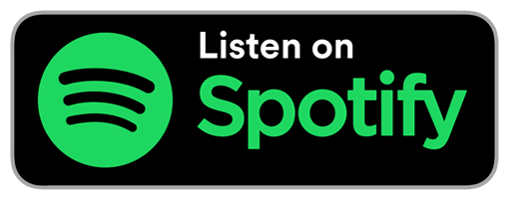Speak Clear English - Enroll Today
INGLÊS & TECNOLOGIA:
Surgimento da Internet

Fonte: Olhar Digital
A Internet foi criada em 1969 com o nome de “ARPANET” nos EUA.
Esta é a primeira de muitas aulas de inglês relacionadas à tecnologia que estamos postando! Não é surpresa que a tecnologia faça parte do nosso dia-a-dia globalizado. A tecnologia é uma aliada que está presente em tantos aspectos do nosso dia a dia.
Por isso é tão importante conhecer termos tecnológicos em inglês, já que a maioria dos termos relacionados à tecnologia se originam em inglês.
Teremos vários artigos que tratam a respeito do tema: TECNOLOGIA aqui no nosso site. Então, se você se interessa por esse assunto, acompanhe os nossos artigos, temos muito conteúdo relevante para compartilhar com você. Não se esqueça de contribuir com as informações dos nossos artigos, se você deseja complementar algum conteúdo, falar sobre algum tempo que esquecemos ou se você quer fazer sugestões deixe nos comentários ou fale com a gente pelo Instagram. Teremos prazer em conversar com você.
A Internet é uma tecnologia tão comum hoje em dia, que chega a ser difícil imaginar como os nossos antepassados viveram sem ela. A Internet, como todo processo tecnológico, tem uma história, um momento que marca o seu surgimento, é sobre isso que vamos falar no artigo de hoje.
A internet surgiu a partir de pesquisas militares no auge da Guerra Fria. Esse foi um período no qual qualquer mecanismo, qualquer inovação, qualquer ferramenta nova poderia contribuir nessa disputa liderada pela União Soviética e pelos Estados Unidos: as duas superpotências compreendiam a eficácia e a necessidade absoluta dos meios de comunicação.
O governo dos Estados Unidos temia um ataque russo às bases militares. Um ataque poderia trazer a público informações sigilosas, tornando os EUA vulneráveis. Então foi idealizado um modelo de troca e compartilhamento de informações. Assim, se o Pentágono fosse atingido, as informações armazenadas ali não estariam por completo perdidas. Para isso se tornar possível, era preciso, criar uma rede, que foi chamada de ARPANET, criada pela ARPA, sigla que significa Advanced Research Projects Agency.
A ARPANET funcionava através de um sistema conhecido como chaveamento de pacotes, que é um sistema de transmissão de dados em rede de computadores no qual as informações são divididas em pequenos pacotes, que por sua vez contém trecho dos dados, o endereço do destinatário e informações que permitiam a remontagem da mensagem original. O ataque inimigo nunca aconteceu, mas o que o Departamento de Defesa dos Estados Unidos não sabia era que dava início ao maior fenômeno midiático do século 20′, único meio de comunicação que em apenas 4 anos conseguiria atingir cerca de 50 milhões de pessoas. Importante citar nesse contexto que em 1962, J. C. R. Licklider, do Instituto Tecnológico de Massachusetts (MIT), já falava em termos da criação de uma Rede Intergaláctica de Computadores (Intergalactic Computer Network, em inglês).
Nesse contexto, a emissão do primeiro e-mail da história data 29 de Outubro de 1969. O texto desse primeiro e-mail seria “LOGIN”, conforme desejava o Professor Leonard Kleinrock da Universidade da Califórnia em Los Angeles (UCLA), mas o computador no Stanford Research Institute, que recebia a mensagem, parou de funcionar após receber a letra “O”. Já a primeira conexão ARPANET foi estabelecida entre a Universidade da California em Los Angeles e o Instituto de Pesquisa de Stanford às 22h30 do dia 29 de outubro de 1969.
Arpanet se tornou o núcleo técnico do que poderia se tornar a Internet, e uma ferramenta primária no desenvolvimento de tecnologias utilizadas na época. O desenvolvimento da Arpanet foi centrado em torno de processos RFC (Request for Comments), ainda usado atualmente para ofertar e distribuir Protocolos de Internet e sistemas.
A seguir, o vocabulário relacionado ao artigo de hoje, para que você tenha as ferramentas de que precisa para ter sucesso em inglês.
English Vocabulary to Know Section
10 vocab words:
1) Emergence: the fact of something becoming known or starting to exist.
2) Technology: the study and knowledge of the practical, especially industrial, use of scientific discoveries.
3) Research: a detailed study of a subject, especially in order to discover new information or reach a new understanding.
4) Innovation: the use of a new idea or method.
5) Media: the internet, newspapers, magazines, television, etc., considered as a group.
6) Information: used in advertisements, news articles, etc. when giving something such as a website or phone number where someone can find more information about something.
7) Sharing: to put something on a social media website so that other people can see it, or to let other people see something that someone else has put on a website.
8) Network: a large system consisting of many similar parts that are connected together to allow movement or communication between or along the parts, or between the parts and a control centre.
9) Message: a short piece of information that you give to a person when you cannot speak to them directly.
10) Email: the system for using computers to send messages over the internet.
Esqueci algum acrônimo que você deseja saber? Comente abaixo para solicitar que mais acrônimos ou termos relacionados à tecnologia sejam adicionados à lista.
Pronto para mais inglês? Fale inglês claramente ao ingressar em um dos meus cursos de inglês que mudam sua vida.
Clique em um dos links a seguir para começar a falar um inglês mais claro!
1) Clear English Pronunciation Video Course
2) English Vocabulary – Audio Files & PDF – TOEFL & IELTS
3) Idioms in Conversation
4) Jumpstart Your English Audiobook + eBook
Siga-nos no Youtube e no Instagram:
@studyenglishwithandrea – Postagens diárias de inglês, dicas e vocabulário!
@citizenshiptest – Para quem quer estudar para o Teste de Cidadania Americana.
Fontes:
https://pt.wikipedia.org/wiki/Hist%C3%B3ria_da_Internet
https://dictionary.cambridge.org/pt/dicionario/ingles/
Até a próxima, Feliz Aprendizado!
Speak Clear English - Enroll Today

Jhessika Nascimento
Director of International Partnerships
Jhessika Nascimento is the Director of International Partnerships for Study With Andrea and lives in Brasilia, Brazil.
Jhessika is a bilingual teacher of English and Portuguese, studying for a Master's Degree in Strategic Management in Information Technologies at the Universidad Internacional Iberoamericana.
Graduation in Letters - Portuguese and English.
Postgraduate in Teaching in Higher Education.
Postgraduate in Risk Management and Cybersecurity.
Postgraduate Executive MBA in Process Management BPM-CBOK.
Postgraduate in Translation and Proofreading of Texts in English.
The following is a TOEFL Reading practice test to help you prepare for the Reading section of the TOEFL test.
Instructions: Read the sample passage below and then answer the questions that follow.
TOEFL Reading Practice Passage
Gorillas are ground-dwelling, predominantly herbivorous apes that inhabit the forest of central Sub-Saharan Africa. The genus Gorilla is divided into two species: the eastern gorillas and the western gorillas (both critically endangered), and either four or five subspecies. They are the largest living primates. The DNA of gorillas is highly similar to that of humans, from 95 to 99% depending on what is included, and they are the next closest living relatives to humans after the chimpanzees and bonobos.
Gorillas' natural habitats cover tropical or subtropical forest in Sub-Saharan Africa. Although their range covers a small percentage of Sub-Saharan Africa, gorillas cover a wide range of elevations. The mountain gorilla inhabits the Albertine Rift montane cloud forests of the Virunga Volcanoes, ranging in altitude from 2,200 to 4,300 metres (7,200 to 14,100 ft). Lowland gorillas live in dense forests and lowland swamps and marshes as low as sea level, with western lowland gorillas living in Central West African countries and eastern lowland gorillas living in the Democratic Republic of the Congo near its border with Rwanda.
(#1) Gorillas move around by knuckle-walking, although they sometimes walk upright for short distances, typically while carrying food or in defensive situations. (#2) A 2018 study investigating the hand posture of 77 mountain gorillas at Bwindi Impenetrable National Park (8% of the population) found that knuckle walking was done only 60% of the time, and they also supported their weight on their fists, the backs of their hands/feet, and on their palms/soles (with the digits flexed). (#3) Studies of gorilla handedness have yielded varying results, with some arguing for no preference for either hand, and others right-hand dominance for the general population. (#4)
The eastern gorilla is more darkly colored than the western gorilla, with the mountain gorilla being the darkest of all. The mountain gorilla also has the thickest hair. The western lowland gorilla can be brown or grayish with a reddish forehead. In addition, gorillas that live in lowland forest are more slender and agile than the more bulky mountain gorillas. The eastern gorilla also has a longer face and broader chest than the western gorilla. Like humans, gorillas have individual fingerprints. Their eye color is dark brown, framed by a black ring around the iris. Gorilla facial structure is described as mandibular prognathism, that is, the mandible protrudes farther out than the maxilla. Adult males also have a prominent sagittal crest.
A gorilla's lifespan is normally between 35 and 40 years, although zoo gorillas may live for 50 years or more. Colo, a female western gorilla at the Columbus Zoo and Aquarium, was the oldest known gorilla at 60 years of age when she died on 17 January 2017.
Questions
1. According to the passage, gorillas can live in
a. a variety of altitudes.
b. several different countries in Africa.
c. thick forests.
d. lowland forests only.
2. All of the following is true about gorillas EXCEPT
a. they primarily eat smaller animals.
b. they live in a forest habitat.
c. their genetics are similar to humans.
d. their diet consists of vegetation.
3. Look at the word predominantly in paragraph 1. The word predominantly in this passage refers to
a. impulsively
b. unfortunately
c. mainly
d. lastly
4. Look at the word inhabits in paragraph 2. The word inhabits in this passage refers to
a. lives in
b. protects
c. goes
d. works
5. The author implies that
a. most gorillas prefer using their left hand over their right.
b. gorillas rarely walk on their knuckles.
c. gorillas regularly walk upright for long distances.
d. studies haven't solidly proven which hand gorillas prefer using.
6. Why does the writer mention that the eastern gorilla also has a longer face and broader chest than the western gorilla?
a. To validate the importance a broad chest in western gorillas
b. To define the meaning of "broad"
c. To highlight a physical difference between types of gorillas
d. To demonstrate that most gorillas are identical in physical build
7. Which of the following statements is true for BOTH eastern and western gorillas.
a. Both eastern and western gorrilas are brown with red foreheads.
b. Both eastern and western gorrilas have unique fingerprints.
c. Both eastern and western gorrilas have thin hair.
d. Both eastern and western gorrilas have light brown eyes.
8. In Paragraph 3, look at the four numbers (#1, #2, #3, #4) that indicate where the following sentence would be added to the passage.
Such a range of hand postures was previously thought to have been used by only orangutans.
Where would the sentence best fit?
(View all the correct answers below.)
Great job! If you're ready to take your TOEFL preparation to the next level, go to StudyWithAndrea.com/TOEFL.
Answers: 1. d 2. a 3. c 4. a 5. d 6. c 7. b 8. #3
Click on one of the following links to start speaking clearer English!
1) TOEFL MASTER CLASS
2) free mini-course "punctuation mistakes to avoid"
3) Clear English Pronunciation Video Course
4) English Vocabulary - Audio Files & PDF - TOEFL & IELTS
About Andrea
Andrea Giordano is the founder of StudyWithAndrea.com and has taught more than 1,000,000 students from 180 countries. Andrea holds a Master of Education (TESOL) from Shenandoah University, and is the former Executive Director of TESOL and ESL programs at Campbellsville University. Andrea is a proven leader in online English teaching and is driven by her passion to help you speak English clearly.





